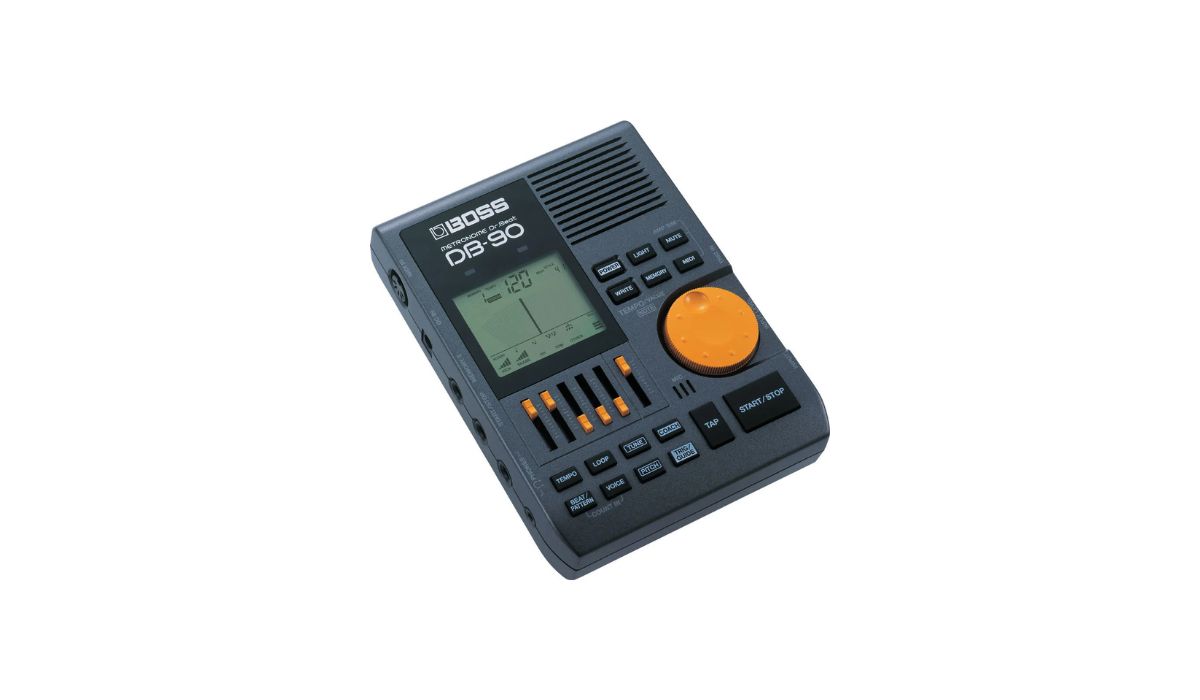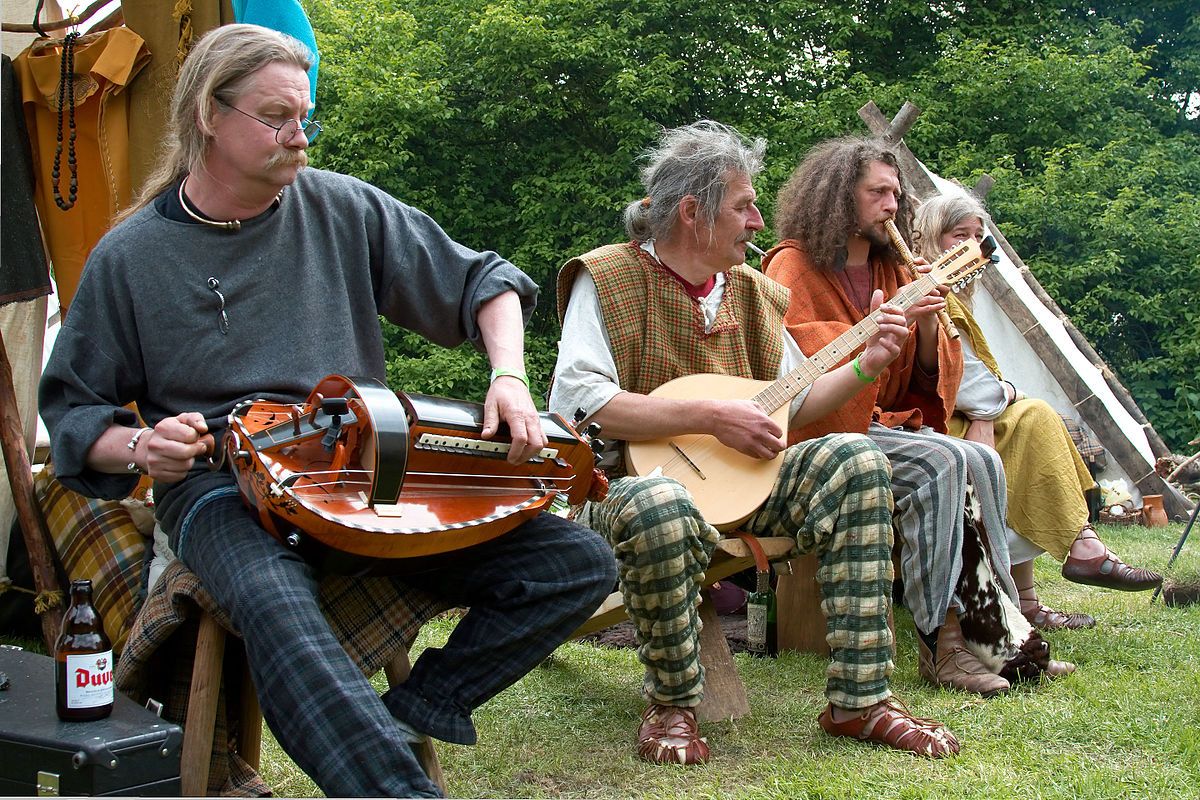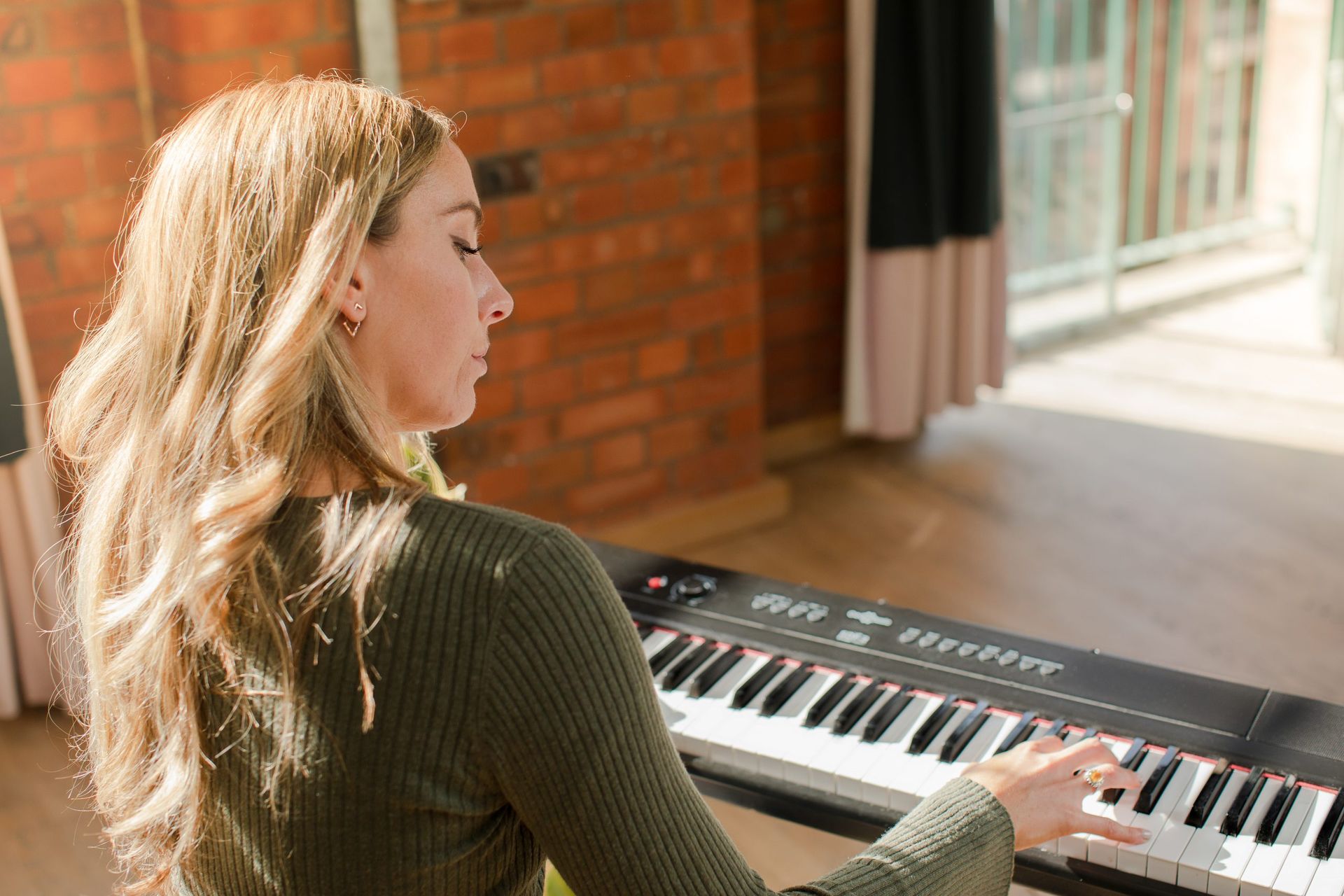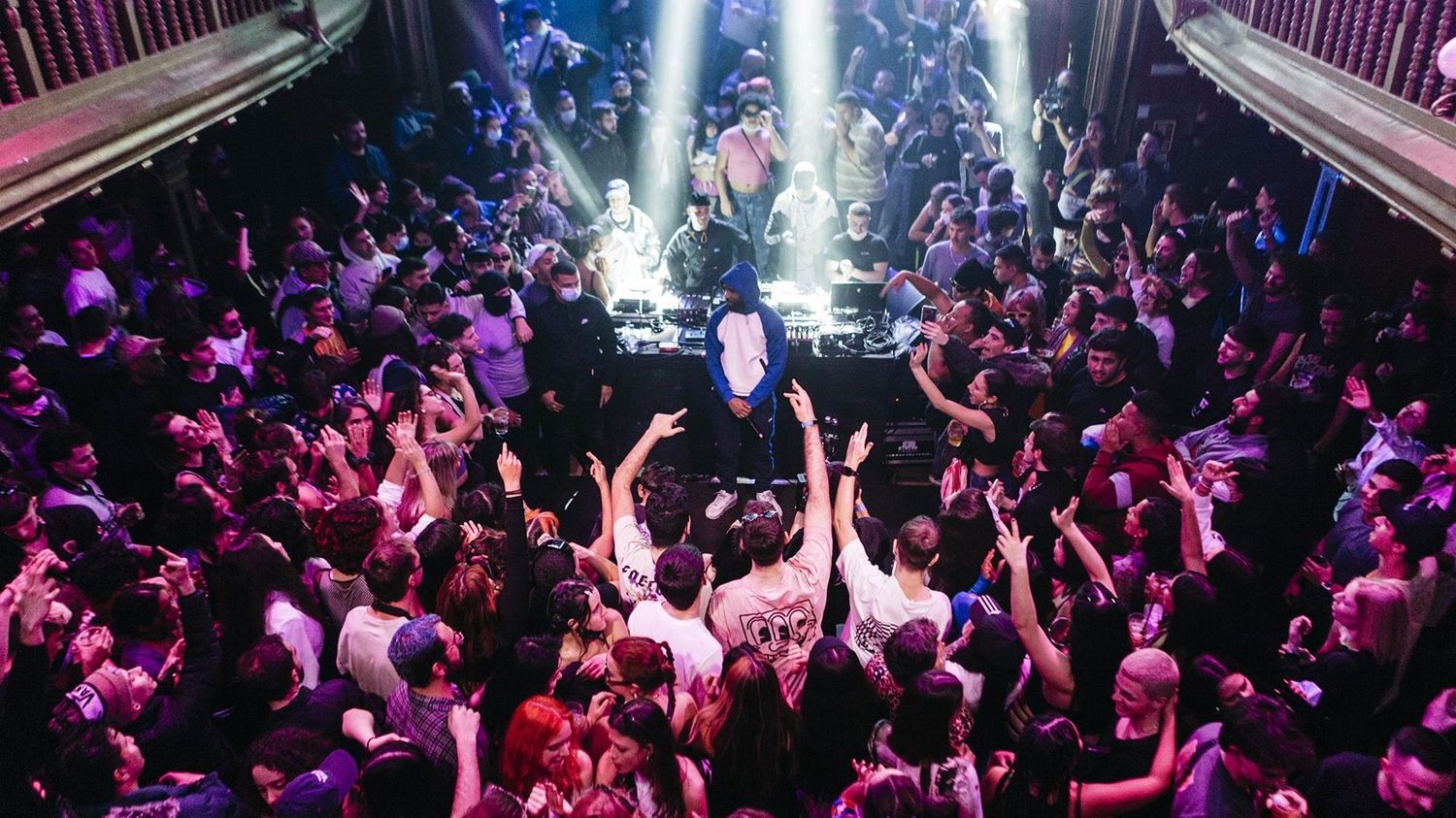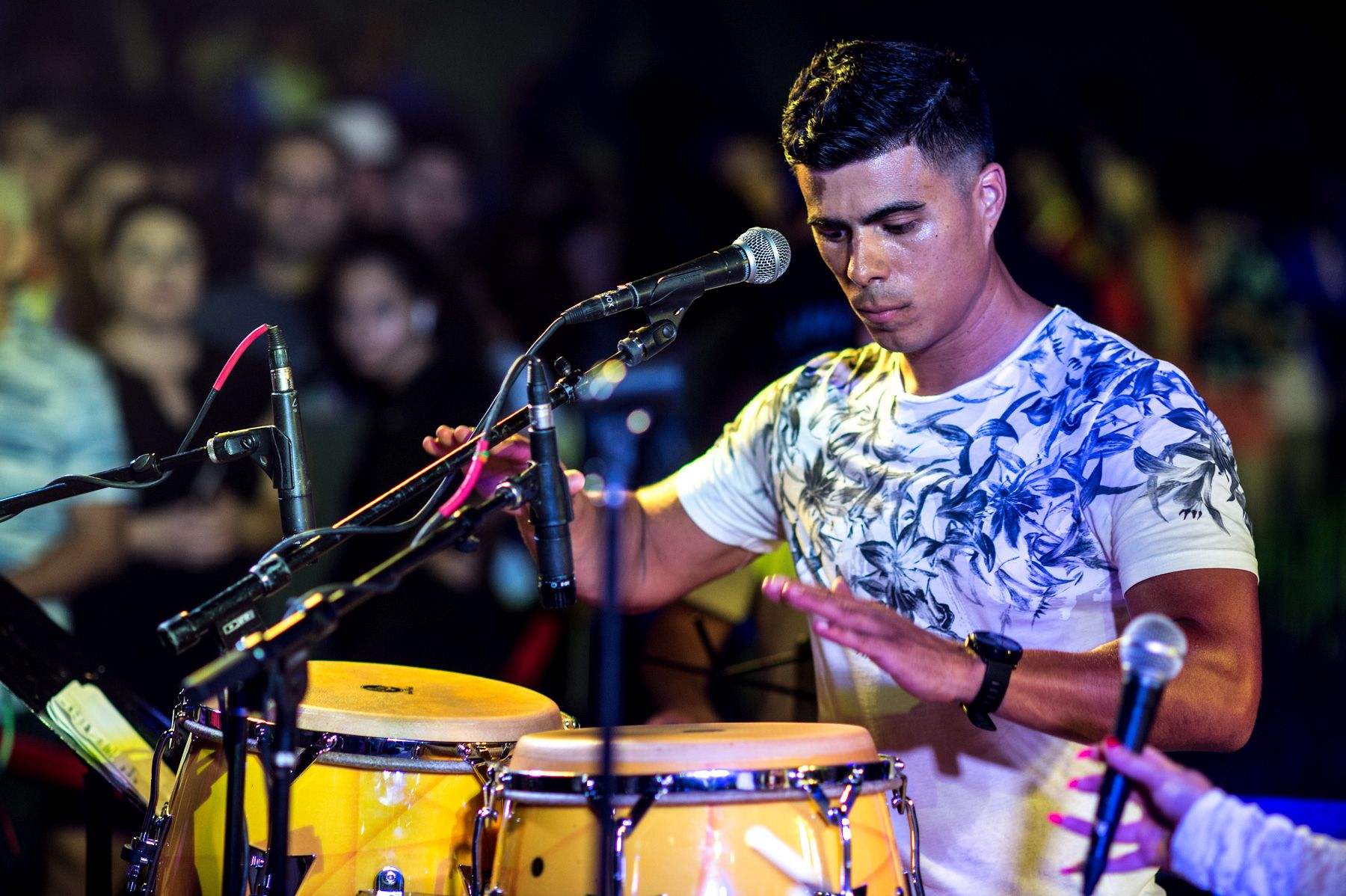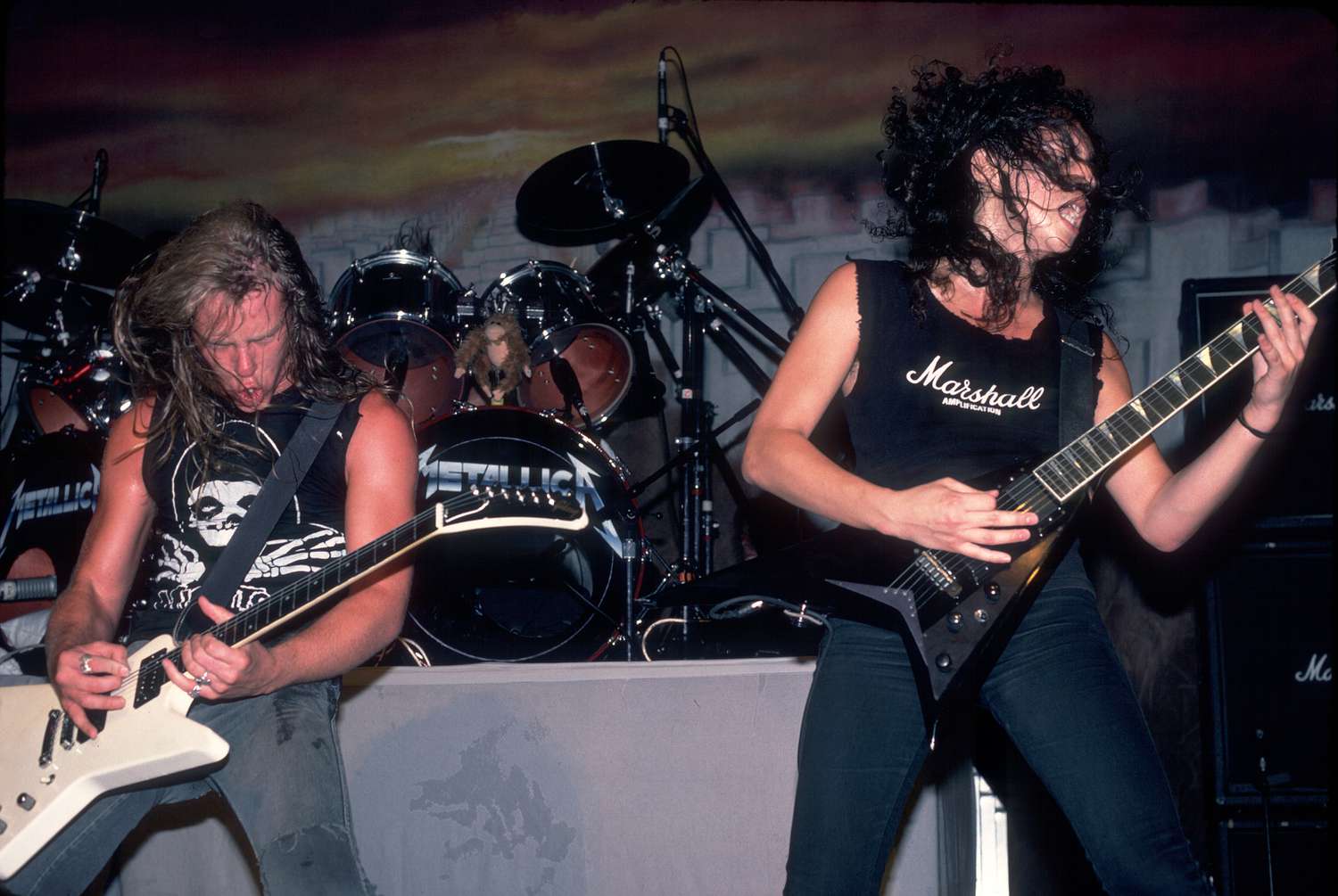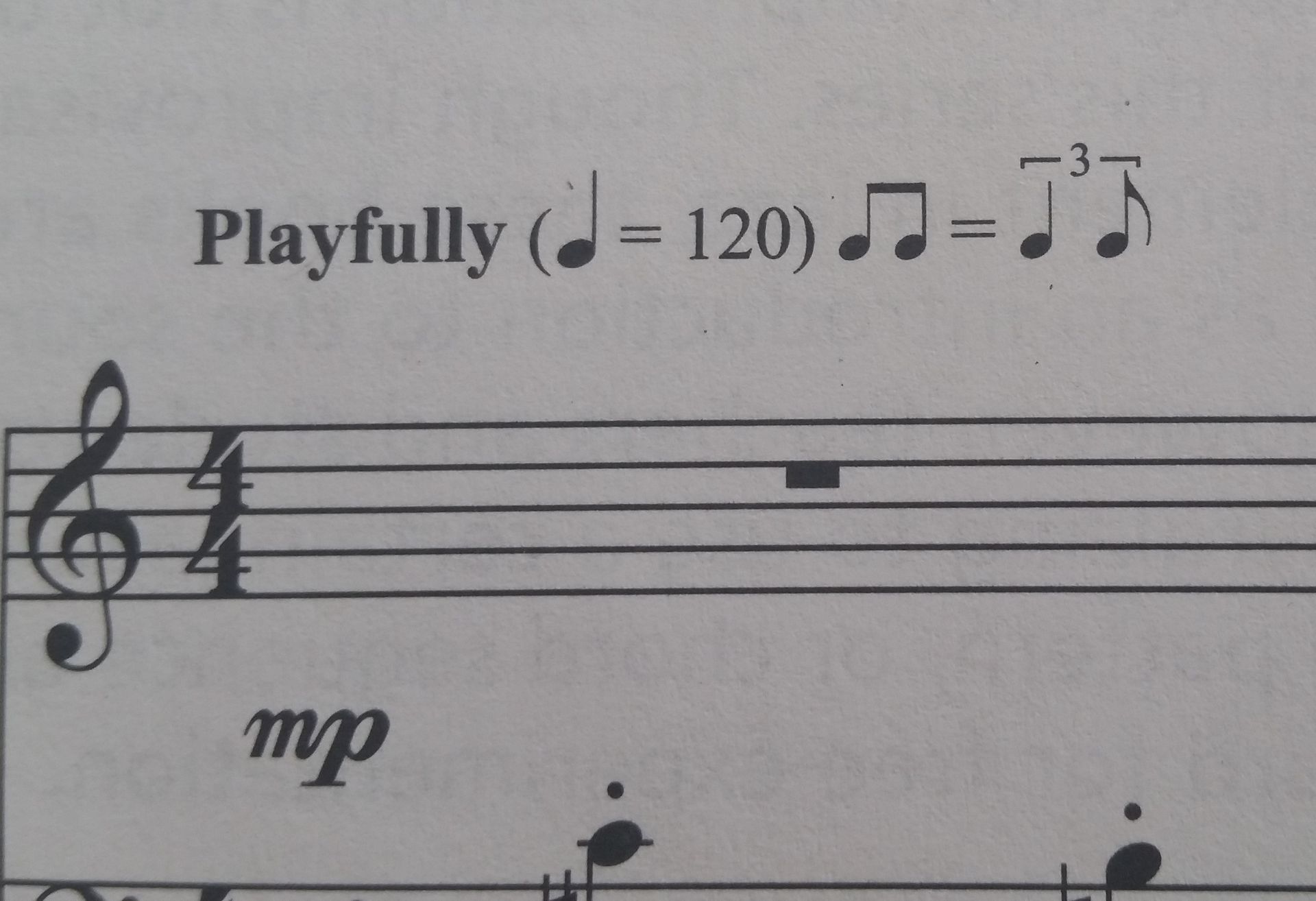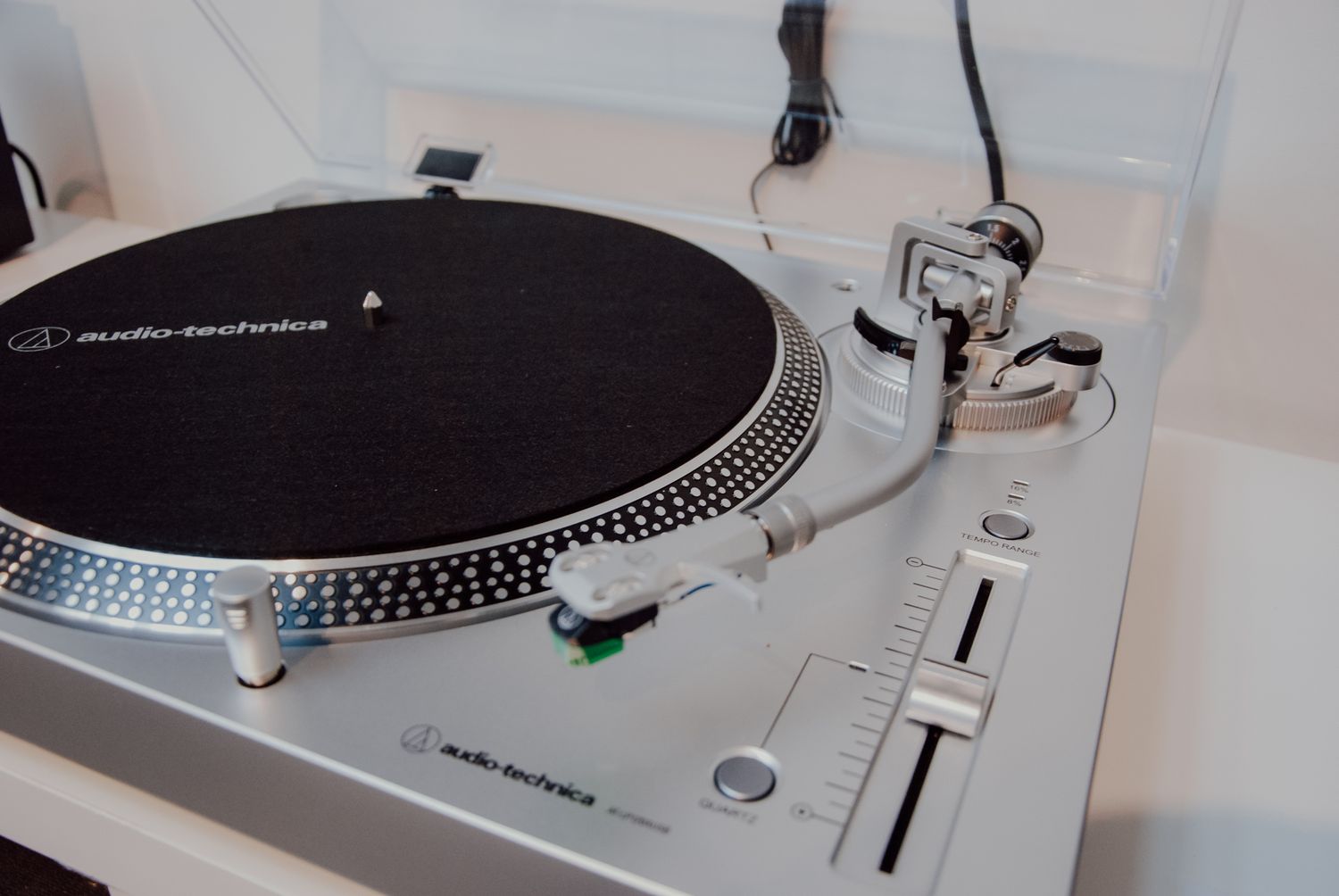

Jazz
What Tempo Is Jazz
Modified: January 22, 2024
Discover the essence of Jazz music by learning about its tempo variations and how it influences the rhythmic flow of this iconic genre.
(Many of the links in this article redirect to a specific reviewed product. Your purchase of these products through affiliate links helps to generate commission for AudioLover.com, at no extra cost. Learn more)
Table of Contents
Introduction
Jazz is a genre of music that has captivated audiences for over a century. Its rich history, improvisational nature, and unique sound have made it a beloved art form across the globe. One of the key elements that defines jazz music is tempo. The tempo, or speed, at which a jazz piece is played can have a significant impact on the overall feel and experience for both the performers and the listeners.
In this article, we will delve into the world of jazz and explore the role of tempo in shaping its distinctive sound. We will examine how tempo influences the improvisation, the importance of swing, the various tempo markings used in jazz, and the ways in which tempo changes can enhance musicality in this genre. Additionally, we will delve into the common tempos found in different jazz styles and trace the evolution of tempo in jazz over time.
So, whether you’re a jazz enthusiast wanting to gain a deeper understanding of the genre or a musician looking to explore the nuances of tempo in jazz, this article will provide you with the insight you need to appreciate the significance of tempo in this captivating musical genre.
Defining Jazz
Before we delve into the role of tempo in jazz, it’s important to have a clear understanding of what jazz is. Jazz is a genre of music that originated in African American communities in the late 19th and early 20th centuries.
What sets jazz apart from other genres is its emphasis on improvisation, syncopated rhythms, and complex harmonic progressions. It is a genre that is characterized by its ability to constantly evolve and adapt, incorporating elements from different musical traditions and cultural influences.
Jazz can take on various forms, including swing, bebop, cool jazz, fusion, and many more. Each subgenre has its own unique characteristics, but they all share the common thread of embracing individual expression and creativity.
At its core, jazz is a deeply expressive and emotional form of music that allows musicians to tell stories and convey emotions through their instruments. It embraces spontaneity and encourages musicians to interact and respond in the moment, creating a dynamic and ever-changing performance.
Over the years, jazz has gained widespread recognition and has become an integral part of the global music scene. Its influence can be heard in countless genres and artists across different styles of music.
Now that we have a foundation in understanding jazz, let’s explore the role that tempo plays in shaping the unique characteristics and experience of this genre.
The Role of Tempo in Jazz
Tempo is a fundamental element in jazz music, as it sets the pace, energy, and overall mood of a piece. The tempo choice can completely transform the feel and impact of a jazz composition or performance.
One of the key aspects of tempo in jazz is the concept of “groove” or “swing.” Swing refers to the rhythmic feel and syncopation that is a hallmark of jazz. It is what gives jazz music its distinctive and infectious groove. The tempo at which a jazz piece is played greatly influences the swing feel and can determine how the musicians and listeners experience the music.
A slower tempo in jazz can create a relaxed and introspective mood, allowing for extended solos and intricate improvisations. This tempo choice is often associated with ballads or slower jazz standards. It gives musicians the opportunity to explore melodic and harmonic complexities, conveying a sense of emotional depth.
On the other hand, a faster tempo in jazz can create energy, excitement, and a sense of exhilaration. It challenges the musicians to play with technical prowess and precision, showcasing their dexterity and virtuosity. This tempo choice is often found in upbeat and energetic jazz compositions, such as bebop or fusion.
Furthermore, the tempo in jazz also affects the interaction and communication between the musicians. A slower tempo allows for more nuanced and deliberate musical conversations, while a faster tempo encourages dynamic and rapid exchanges, pushing the musicians to keep up with each other and create tension and release.
Overall, the role of tempo in jazz is multi-faceted. It not only sets the pace and energy of the music but also influences the emotional impact, improvisational possibilities, and the interaction between musicians. It is through tempo that jazz musicians can shape and convey their artistic expression, creating a unique and captivating musical experience.
The Importance of Swing
When discussing jazz, it is impossible to overlook the concept of swing. Swing is more than just a rhythmic quality; it is the essence of jazz itself. It is the element that brings vitality, groove, and a sense of infectious joy to the music.
Swing can be defined as a particular rhythmic feel characterized by a combination of syncopation, swing eighth notes, and a relaxed, loping groove. It is what gives jazz its distinctive and unique swing feel, setting it apart from other forms of music.
The importance of swing in jazz lies in its ability to create a dynamic and interactive musical experience. The swinging rhythm encourages musicians to play with a sense of freedom and flexibility, allowing for spontaneous expression and improvisation. It creates a sense of forward motion and propels the music forward, drawing both the musicians and the listeners into its irresistible groove.
Swing also plays a crucial role in the interaction between musicians in a jazz ensemble. It establishes a rhythmic foundation that encourages call and response between instruments, creating a lively musical conversation. The rhythm section, comprised of the drums, bass, and piano, forms the heartbeat of the swing, providing the rhythmic pulse that propels the music forward while allowing the soloists to soar.
Furthermore, the significance of swing extends beyond the performance aspect of jazz. It is deeply ingrained in the cultural and historical context of the music. Swing music became popular during the era of the Big Band jazz in the 1930s and 1940s, and it played a pivotal role in shaping the social and cultural fabric of that time. It became a symbol of resilience, joy, and unity during a period of economic turmoil and racial segregation.
Today, swing continues to be a fundamental element of jazz, transcending time and generations. Whether it’s the classic swing of the big band era or the modern interpretations of swing in contemporary jazz, it remains a vital ingredient that defines the genre and brings people together in the shared experience of jazz music.
In the next section, we will explore the different tempo markings used in jazz, further highlighting the impact of tempo on the genre.
Different Tempo Markings in Jazz
In jazz, tempo markings are a way to indicate the desired speed or pace of a piece of music. These markings provide a reference point for the musicians and help establish the overall feel and energy of the performance. While jazz allows for flexibility and improvisation, having a common understanding of tempo is essential for cohesive ensemble playing.
When it comes to tempo markings in jazz, there are several commonly used terms that describe different speeds. Here are some of the key tempo markings you will frequently encounter in jazz:
- Ballad: Ballad is a slow and lyrical tempo. It is often associated with tender and heartfelt performances, allowing for expressive solos and emotional depth. Ballads in jazz can showcase the sensitivity and storytelling ability of the musicians.
- Moderato: Moderato indicates a moderate tempo that is not too fast or too slow. It provides a comfortable and steady pace, allowing for the development of melodic and harmonic ideas without feeling rushed or sluggish.
- Up-tempo: Up-tempo refers to a fast and lively tempo. It is characterized by its energy and often associated with virtuosic playing and intricate improvisation. Up-tempo tunes demand technical proficiency and quick thinking from the musicians.
- Double-time: Double-time, as the name suggests, is a tempo that is twice as fast as the original tempo. It is a challenging and exhilarating speed that requires musicians to think and execute their ideas at an accelerated pace. Double-time passages can add excitement and intensity to a jazz piece.
These tempo markings are just a few examples, and there is a wide range of tempos that can be explored in jazz music. It’s worth noting that even within a specific tempo marking, there can be variations and nuances depending on the interpretation of the musicians and the specific style of jazz being played.
Understanding and navigating different tempo markings in jazz is vital not only for musicians but also for listeners. It allows for a deeper appreciation and engagement with the music, as the tempo contributes to the overall mood, energy, and storytelling within a jazz piece.
Next, we will delve into how tempo influences improvisation, one of the central elements of jazz music.
The Influence of Tempo on Improvisation
Improvisation is at the heart of jazz music, allowing musicians to spontaneously create melodies, chord progressions, and rhythmic ideas on the spot. The tempo of a jazz piece has a profound influence on the improvisational choices and possibilities for the musicians.
When it comes to slower tempos, such as ballads, the pace allows for more deliberate and lyrical improvisation. Musicians have the opportunity to explore melodic variations, intricate phrasing, and build tension and release over an extended period. Slower tempos provide a canvas for emotive playing, allowing musicians to convey a range of feelings and emotions through their improvised lines.
On the other hand, faster tempos present a different set of challenges and opportunities for improvisation. The quick pace requires musicians to think and react in real-time, pushing their technical abilities and creativity to the limits. Fast tempos often encourage virtuosic and dazzling displays of improvisation, with rapid-fire phrases, intricate melodic patterns, and rhythmic brilliance.
The tempo also affects the rhythmic choices made by the improvising musicians. At slower tempos, musicians may explore more spacious and relaxed rhythms, allowing each note to breathe and resonate. In contrast, faster tempos demand more rhythmic complexity and precision, with rapid syncopated patterns and intricate rhythmic variations.
Additionally, the tempo of a jazz piece can influence the overall mood and energy of the improvisation. A slow, languid tempo may inspire introspective and introspective solos, while a fast tempo can ignite excitement and drive musicians to take risks and push their boundaries.
It’s important to note that in jazz, tempo is not a rigid framework but rather a starting point for improvisation. Musicians have the freedom to manipulate the tempo, incorporating rubato (temporary fluctuations in tempo) and tempo changes to add dynamic contrasts and further shape their improvisational ideas.
In summary, the tempo plays a significant role in shaping the improvisational choices and possibilities in jazz. Whether it’s the expressive and nuanced playing in a slow ballad or the thrilling virtuosity in a fast-tempo bebop tune, the tempo sets the stage for musicians to explore and create in the moment, giving jazz its spontaneous and captivating nature.
Next, we will dive into the topic of tempo changes and musicality in jazz.
Tempo Changes and Musicality in Jazz
In the world of jazz, tempo changes are not uncommon. They can be used as a tool to enhance musicality, add excitement, and create dynamic shifts within a composition or performance. Tempo changes allow musicians to manipulate the energy, mood, and narrative of the music, showcasing their artistic expression and adding depth to their improvisations.
One common type of tempo change in jazz is the accelerando, which is a gradual increase in tempo. Accelerandos can be used to build momentum, intensify the energy, and propel the music forward. They create a sense of anticipation and excitement, providing a platform for the musicians to showcase their technical prowess and improvisational skills.
Another type of tempo change is the ritardando, where the tempo gradually slows down. Ritardandos are often used to create a sense of climax or resolution in a piece. They can be employed at the end of a solo or as a transition between different sections of a composition, adding emotional weight and allowing the music to breathe.
Tempo changes can also be abrupt and unexpected, adding an element of surprise and intrigue to the music. These sudden shifts in tempo can be used to create tension or highlight specific musical moments. They require the musicians to be responsive and adaptable, heightening the sense of spontaneity and unpredictability that is characteristic of jazz improvisation.
Moreover, tempo changes provide opportunities for artistic interpretation and expression. Musicians can use tempo changes as a way to infuse their own musical personality and style into a performance. By manipulating the tempo, they can shape the phrasing, dynamics, and articulation of their improvisations, creating a unique and personalized expression.
Furthermore, tempo changes can enhance the musical communication and interaction between musicians. They serve as cues or signals for the players to synchronize and coordinate their playing, leading to moments of musical unity and collaboration. The ability to seamlessly navigate tempo changes is a testament to the musicians’ skill and intuition, adding to the overall musicality and cohesiveness of the performance.
In summary, tempo changes play a significant role in jazz music, allowing for artistic expression, dynamic shifts, and heightened musicality. Whether through gradual accelerandos, ritardandos, or sudden changes in tempo, they provide opportunities for musicians to explore and convey their musical ideas, engage listeners, and create memorable performances.
Next, we will explore the common tempos found in different jazz styles, shedding light on the various rhythmic characteristics of the genre.
Common Tempos in Different Jazz Styles
Jazz is a diverse genre that encompasses various styles, each with its own unique characteristics and tempos. The tempo of a jazz piece not only sets the mood but also defines the rhythmic foundation and overall energy of the music. Here are some common tempos found in different jazz styles:
- Swing: Swing is a core element of jazz and is characterized by its medium to up-tempo pace. The swing feel is typically marked by a steady, medium groove, creating a relaxed and infectious rhythmic pattern. In swing jazz, tempos can range from medium swing, around 120-160 beats per minute (BPM), to up-tempo swing, which can reach 200 BPM or more.
- Bebop: Bebop is a fast-paced and complex style of jazz that emerged in the 1940s. Bebop tempos often range from fast to very fast, with tempos exceeding 200 BPM. The rapid pace of bebop demands technical agility and virtuosity from the musicians, allowing for intricate improvisations and rapid chord changes.
- Cool Jazz: Cool jazz, known for its laid-back and introspective vibe, tends to feature slower tempos. The cool jazz style often incorporates ballads and medium swing tempos, providing a relaxed and mellow atmosphere. The tempos in cool jazz can range from slow ballads, around 60-80 BPM, to medium tempos around 100-120 BPM.
- Fusion: Fusion is a genre that blends elements of jazz with other genres such as rock, funk, and electronic music. Fusion tempos can vary widely, depending on the specific fusion style or composition. It can range from slower tempos reminiscent of ballads to up-tempo grooves influenced by rock or funk, often surpassing 150 BPM.
- Latin Jazz: Latin jazz incorporates rhythmic elements and instrumentation from Latin American music. It encompasses various subgenres such as Bossa Nova, Samba, and Afro-Cuban jazz. The tempos in Latin jazz can range from medium swing to up-tempo grooves, with a focus on syncopated rhythms and infectious Latin percussion.
Of course, these are just a few examples, and jazz encompasses many other subgenres and styles that have their own specific tempos and rhythmic characteristics.
It’s worth noting that within each jazz style, there can be variation and flexibility in tempo, allowing for creative interpretation and individual expression. Musicians may choose to push or pull the tempo slightly to create a different feel or to highlight specific musical moments.
Having a grasp of the various tempos in different jazz styles provides a foundation for understanding and appreciating the rhythmic complexities and diversity within the genre.
Next, we will explore the evolution of tempo in jazz, tracing its development throughout the history of this vibrant and ever-evolving music.
The Evolution of Tempo in Jazz
The evolution of tempo in jazz is a fascinating journey that reflects the growth and transformation of the genre over time. From its early roots to the modern era, jazz has seen shifts in tempos that have contributed to its dynamic and innovative nature.
In the early days of jazz, during the ragtime and Dixieland eras of the late 19th and early 20th centuries, tempos tended to lean towards a medium pace. These tempos provided a solid foundation for the syncopated rhythms and collective improvisation that were characteristic of these early jazz styles.
As jazz evolved and moved into the swing era of the 1930s and 1940s, tempos began to shift towards a more up-tempo range. The big bands drove the sound of this era, with energetic performances and fast swing tempos. The swing style elevated tempo to new heights, encouraging virtuosic solos and intricate ensemble playing.
With the advent of bebop in the 1940s, tempos in jazz reached unprecedented speeds. Bebop musicians pushed the boundaries of tempo, incorporating fast tempos that required exceptional technical skill and agility. This era saw the emergence of rapid-fire improvised lines and complex harmonic progressions.
In the 1950s and beyond, jazz continued to explore different tempos and rhythmic possibilities. The cool jazz movement embraced slower tempos and a more laid-back approach, providing a contrast to the fast-paced bebop style. Alongside cool jazz, a variety of other styles and subgenres emerged, each with its own unique tempo preferences and rhythmic innovations.
The fusion era of the late 1960s and 1970s saw jazz blending with elements of rock, funk, and other genres. This fusion style introduced varied tempos, ranging from slow and soulful ballads to high-energy, up-tempo grooves. The evolving use of technology also allowed for the exploration of electronic beats and unconventional rhythm patterns.
Today, jazz continues to evolve, with musicians embracing a wide range of tempos and rhythmic approaches. Contemporary jazz encompasses everything from traditional swing and bebop to avant-garde experimentation, stretching the boundaries of tempo and rhythm.
The evolution of tempo in jazz mirrors the evolution of the genre itself, reflecting the influences of different time periods, cultural contexts, and artistic visions. It demonstrates the adaptability and innovation of jazz as it continues to push boundaries and explore new musical territories.
By incorporating diverse tempos into their compositions and performances, jazz musicians today pay homage to the rich history of the genre while simultaneously pushing it forward into new realms of creativity.
As we conclude this exploration of tempo in jazz, we recognize that tempo will always be an essential component in this ever-evolving and expressive genre.
Conclusion
Jazz is a vibrant and dynamic genre of music that captivates audiences with its improvisation, rhythmic complexity, and expressive nature. Tempo, the speed at which a jazz piece is played, plays a crucial role in shaping the character and experience of the music.
Throughout this article, we have explored the various aspects of tempo in jazz. We have seen how tempo influences the swing, groove, and overall mood of a jazz piece. We have discovered the impact of tempo on improvisation, allowing musicians to navigate the intricacies of slower ballads or showcase their technical prowess in faster tempos.
We have also explored the different tempo markings used in jazz, from the slow and heartfelt ballads to the rapid-fire tempos of bebop. We have recognized the importance of swing, which not only defines the rhythmic feel of jazz but also serves as a foundation for musical expression and interaction.
Tempo changes have been viewed as tools for enhancing musicality, adding excitement, and creating dynamic shifts within jazz compositions and performances. We have seen how tempo changes can influence the mood, energy, and narrative of the music, showcasing the artistry and spontaneity of the musicians.
In addition, we have discussed the common tempos found in different jazz styles, ranging from the medium swing of classic jazz to the fast and intricate tempos of bebop. We have recognized that tempo preferences can vary widely within each style, allowing for flexibility and creative interpretation.
Finally, we have traced the evolution of tempo in jazz, witnessing its transformation from the moderate swing of early jazz to the rapid tempos of bebop and the diverse range of tempos found in contemporary jazz.
As we conclude this exploration, we recognize that tempo is a fundamental element in jazz, shaping the music’s expression, improvisation, and rhythmic textures. Through tempo, jazz musicians can convey emotions, engage in musical conversations, and create captivating and memorable performances.
Whether you are a jazz enthusiast, musician, or someone new to the genre, understanding the importance of tempo in jazz allows for a deeper appreciation of its artistry and a more enriching listening experience.
So, next time you immerse yourself in the world of jazz, pay attention to the tempo, let the swing groove move you, and embrace the diverse tempos that make jazz such a dynamic and captivating musical genre.



